#ai and automation solutions
Explore tagged Tumblr posts
Text
5 Ways Nopcommerce Will Help You Get More Business

In 1994, the first item ordered online at Amazon was a book. This $12.48 transaction made history and signaled the world that the “internet is open” for online transactions. Today, the e-commerce industry has grown into a trillion-dollar industry.
Data from Statista shows that e-commerce sales worldwide hit a staggering $4.3 trillion in 2021, and the number is growing by the day. With the shift towards digital retail moving at the speed of light, many companies plan to go online.
The common dilemma that many retailers face is which e-commerce platform to choose when starting their venture.
One platform—nopCommerce, stands tall above the competition, offering rich and transformational functionalities to small and medium-sized stores. We’ll delve into the crux of nopCommerce and explain why it’s the best platform for your business.
What Is nopCommerce? nopCommerce is a free and open-source ecommerce solution for all businesses. It powers tens of thousands of online stores worldwide, including reputable brands like Volvo, Reebok, North Face, and Hyatt Hotels.
ecommerce solutions The platform offers cutting-edge features and functionalities anyone would expect in a world-class e-commerce platform, including:
Product comparison tools
User reviews
Shipping management
Discount options
Marketing
Mobile access
Data security Unlike other solutions, nopCommerce is based on the ASP.NET framework and Microsoft SQL Server 2012 back-end database.
Since its inception in 2008, nopCommerce has won numerous prestigious awards, including CMScritic’s “Best eCommerce for SMB” award and the Packt Open-Source Award.
Online Business Problems that nopCommerce Solves From scale to sales, online businesses face many challenges at various stages due to primarily choosing an inadequate and inefficient eCommerce development platform. Traditional eCommerce development platforms were focused only on offering essential digital commerce solutions.
Meanwhile, modern platforms ensure customization, integration, scalability, security, and innovation for businesses to cut through competition and continuously improve their bottom line. Let’s evaluate how nopCommerce eliminates those challenges that online businesses face.
Problem: Limited Customization Nowadays, developing eCommerce platforms means selecting a template. Every business requires unique features to stand out in a crowded marketplace. A Salesforce study suggests that 64% of customers expect businesses to provide unique and tailored shopping experiences. When eCommerce development platforms do not offer customization, online businesses suffer due to a lack of trust and reliability.
Solution: nopCommerce Flexibility nopCommerce ensures that developers can modify codes the way they want and build plugins to support their eCommerce solution with unique features that competitors do not have. This open-source flexibility helps businesses craft unique user interfaces and, thereby, unique and tailored customer experiences. Integrating AI and automation solutions with an eCommerce platform becomes a catalyst in giving a brand a unique identity.
Problem: High Operational Costs Running an eCommerce store is expensive until a business reaches a breakeven point. In addition to its own offline and online operations costs, an eCommerce store requires many expensive add-on services. Integrating Cloud or RPA solutions automatically increases the costs. 43% of small business owners avoid going online due to the high costs of digital transformation, says a BigCommerce Study.
Solution: nopCommerce’s Cost-Effective Model The biggest relief for small and medium enterprises is that nopCommerce is a free eCommerce solution development platform that charges no recurring license fees. This self-hosted solution offers multiple in-built plugins to reduce the need to build costly plugins. Moreover, due to customization, businesses can have more control over features and functionalities to reduce the cost of features that come with templates. In many ways, nopCommerce stops eCommerce development costs from rising.
Problem: Poor Mobile Experience Smartphone penetration is an open secret worldwide. According to Statista analysis, mobile commerce is expected to grow to $710 billion by 2025. If an eCommerce store is not mobile-friendly, it won’t attract customers and increase conversions. Businesses that fail to provide a rich and effortless mobile experience will not only struggle against competitors but will struggle for survival.
Solution: Mobile-First Approach nopCommerce empowers eCommerce developers to build responsive user interfaces that fit all screen sizes and resolutions without incurring additional costs. nopCommerce’s mobile-first approach ensures that an eCommerce store maintains design continuity across the platforms. Besides, with mobile-friendliness, businesses can integrate and offer many mobile-only features to optimize conversion ratio through enhanced checkout processes.
Problem: Limited Scalability Imagine if a conversion rate drops by 4% for each additional second of load time. According to these statistics, businesses can’t even run their regular businesses if their eCommerce store is not scalable. Businesses are bound to grow, but their eCommerce store remains stagnant and inefficient in handling the increased traffic load and transactions. Consequently, the system gives up on increasing the load time and crashes during peak periods.
Solution: nopCommerce’s Scalable Architecture nopCommerce is a robust, secure, and scalable architecture that empowers eCommerce developers to build genuinely scalable digital commerce solutions that can house large product catalogs, run multiple stores, have wide category ranges, and handle the increased traffic effortlessly. It supports load balancing and multiple servers to keep the system optimized for additional capabilities to reduce load time, process more data, and maintain uptime during critical hours.
Problem: Inadequate Security Measures eCommerce stores are easy targets for hacking, phishing, and various other cyber threats as they house a lot of customer data and financially sensitive information. A 2023 Cybersecurity Ventures report predicts cybercrime will cost the world $10.5 trillion annually by 2025. Inadequate security apparatus invites maximum data breaches, causing massive financial and reputational losses to eCommerce businesses.
Solution: nopCommerce’s Strong Security Features Cybersecurity is of paramount importance for nopCommerce. In addition to providing quick and adequate security updates, nopCommerce delivers built-in SSL support, data encryption, and multi-layer authentication for safe and secure access. nopCommerce strictly follows PCI DSS requirements to process payments securely. Moreover, the nopCommerce community continuously identifies and updates threat potential and vulnerabilities to quickly resolve cyber threat-related issues. It also has a robust disaster recovery mechanism to protect personal and financial data.
Advantages of Using NopCommerce for Your Project With a plethora of options, it can be challenging for any business owner to determine the best ecommerce solution for their business. Here are the top reasons to choose nopCommerce for your project.
1. It’s an Open-Source Platform NopCommerce is an open-source platform, which means it’s free.
There are no upfront fees, subscription fees, or hidden fees to set it up. Anyone can download the source code and modify it to fit their custom requirements.
There is a common fallacy in the tech world that “free solutions” don’t receive security updates and aren’t backed by support.
But this is not true for nopCommerce. The platform has an active community of supporters and skilled developers who are continually working to maintain its standards and make it faster, safer, and more reliable.
2. It Offers Multi-Store Support The multi-store environment has become the new norm in the ecommerce community.
Retailers are no longer restricting the scope of their businesses to a single storefront. Instead, many are opting for multiple storefronts.

NopCommerce online retailers can set the following features separately per store:
Products per store
Product prices per store
Payments per store
Tax rules per store
Shipment methods per store
Content (newsletter, blogs, news) per store With the multi-store feature, retailers can create a nopCommerce marketplace where small vendors can sell their products separately.
3. Ready for Mobile Commerce (M-Commerce) In an age where mobile phone usage surpasses desktop, a mobile-friendly design is a must-have. Furthermore, the current shift to online shopping fueled by the novel COVID-19 pandemic has caused a surge in mobile commerce.
Experts predict that M-commerce will account for 72.3% of all sales by the end of 2021.
In line with the changing consumer behavior, savvy retailers are leveraging mobile-ready e-commerce platforms to grow sales. The nopCommerce platform offers free, mobile-friendly features that are ready to use out of the box.
In addition, nopCommerce enables store owners to easily create mobile versions of their sites without extra development work or add-ons.
4. Comes with Pre-Built Integrations Another great thing about nopCommerce is that it comes with pre-built integrations.
These integrations can save resources while allowing store owners to launch or revamp their online stores quickly. All nopCommerce integrations come from different nopCommerce developers experienced in building integrations for payments, shipping, etc.
For example, the platform is integrated with more than 50 payment getaways and methods, including PayPal, Alipay, WorldPay, and Stripe.
5. It’s Easy to Scale One of the most significant benefits that users get with nopCommerce is on-demand scalability. NopCommerce can work with cheap Windows hosting solution providers like SmarterASP and enterprise hosting solutions like Azure Cloud.

The Final Thoughts NopCommerce makes a strong case for being the best ecommerce development platform. It’s powerful, secure, and cost-effective. Plus, it comes with a plethora of features and functionalities that are hard to find elsewhere for free.

If you want to build a feature-rich, secure, and scalable e-commerce store, contact us at +1 954-397-0800 for a consultation. We offer a wide range of nopCommerce development services tailored to your unique needs.
0 notes
Text

posts that make you want to die
#modern integrate efficiency transform automate orchestrate empowered streamlined solution efficiency AI collaboration revolutionise future#im so tired of this it’s been eight months
2 notes
·
View notes
Text
Top 5 DeepSeek AI Features Powering Industry Innovation
Table of Contents1. The Problem: Why Legacy Tools Can’t Keep Up2. What Makes DeepSeek AI Unique?3. 5 Game-Changing DeepSeek AI Features (with Real Stories)3.1 Adaptive Learning Engine3.2 Real-Time Anomaly Detection3.3 Natural Language Reports3.4 Multi-Cloud Sync3.5 Ethical AI Auditor4. How These Features Solve Everyday Challenges5. Step-by-Step: Getting Started with DeepSeek AI6. FAQs: Your…
#affordable AI solutions#AI automation#AI for educators#AI for entrepreneurs#AI for non-techies#AI for small business#AI in manufacturing#AI innovation 2024#AI time management#business growth tools#data-driven decisions#DeepSeek AI Features#ethical AI solutions#healthcare AI tools#no-code AI tools#Predictive Analytics#real-time analytics#remote work AI#retail AI features#startup AI tech
2 notes
·
View notes
Text
AI Chatbot Development Services for Seamless Customer Support
Our AI-based chatbot development services are designed to provide businesses with an efficient
and scalable solution to improve customer service and streamline workflows. With advanced features such as 24/7 availability, multilingual support, and seamless integration with CRM, ERP, and other business systems, our chatbot platform ensures a smooth customer experience.
We offer highly customizable chatbots tailored to your brand’s voice, enabling businesses to manage high volumes of interactions, enhance user engagement, and boost sales. Our chatbots also feature in-depth analytics that provides valuable insights into user behavior, helping you continuously optimize your customer service efforts. Whether you’re a small and medium enterprise (SME) or a large business enterprise, our chatbot services can be adapted to meet your specific needs. With support for both audio and video calls, and integration with multiple platforms like AWS, Google Cloud, and Azure, our chatbots are the smart choice for businesses looking to improve customer satisfaction and drive revenue growth.
Contact Information
Email: [email protected]
Phone Numbers: +1 408 454 6110
Location: 410 E Santa Clara Street, Unit #1023, San Jose, CA 95113
#<Ai Chatbot solutions>#<Ai chatbot development>#<chatbot services>#<Ai chatbot app development>#<Customer service Automation>#<Chatbot integration>
2 notes
·
View notes
Text
Must-Have Programmatic SEO Tools for Superior Rankings

Understanding Programmatic SEO
What is programmatic SEO?
Programmatic SEO uses automated tools and scripts to scale SEO efforts. In contrast to traditional SEO, where huge manual efforts were taken, programmatic SEO extracts data and uses automation for content development, on-page SEO element optimization, and large-scale link building. This is especially effective on large websites with thousands of pages, like e-commerce platforms, travel sites, and news portals.
The Power of SEO Automation
The automation within SEO tends to consume less time, with large content levels needing optimization. Using programmatic tools, therefore, makes it easier to analyze vast volumes of data, identify opportunities, and even make changes within the least period of time available. This thus keeps you ahead in the competitive SEO game and helps drive more organic traffic to your site.
Top Programmatic SEO Tools

1. Screaming Frog SEO Spider
The Screaming Frog is a multipurpose tool that crawls websites to identify SEO issues. Amongst the things it does are everything, from broken links to duplication of content and missing metadata to other on-page SEO problems within your website. Screaming Frog shortens a procedure from thousands of hours of manual work to hours of automated work.
Example: It helped an e-commerce giant fix over 10,000 broken links and increase their organic traffic by as much as 20%.
2. Ahrefs
Ahrefs is an all-in-one SEO tool that helps you understand your website performance, backlinks, and keyword research. The site audit shows technical SEO issues, whereas its keyword research and content explorer tools help one locate new content opportunities.
Example: A travel blog that used Ahrefs for sniffing out high-potential keywords and updating its existing content for those keywords grew search visibility by 30%.
3. SEMrush
SEMrush is the next well-known, full-featured SEO tool with a lot of features related to keyword research, site audit, backlink analysis, and competitor analysis. Its position tracking and content optimization tools are very helpful in programmatic SEO.
Example: A news portal leveraged SEMrush to analyze competitor strategies, thus improving their content and hoisting themselves to the first page of rankings significantly.
4. Google Data Studio
Google Data Studio allows users to build interactive dashboards from a professional and visualized perspective regarding SEO data. It is possible to integrate data from different sources like Google Analytics, Google Search Console, and third-party tools while tracking SEO performance in real-time.
Example: Google Data Studio helped a retailer stay up-to-date on all of their SEO KPIs to drive data-driven decisions that led to a 25% organic traffic improvement.
5. Python
Python, in general, is a very powerful programming language with the ability to program almost all SEO work. You can write a script in Python to scrape data, analyze huge datasets, automate content optimization, and much more.
Example: A marketing agency used Python for thousands of product meta-description automations. This saved the manual time of resources and improved search rank.
The How for Programmatic SEO
Step 1: In-Depth Site Analysis
Before diving into programmatic SEO, one has to conduct a full site audit. Such technical SEO issues, together with on-page optimization gaps and opportunities to earn backlinks, can be found with tools like Screaming Frog, Ahrefs, and SEMrush.
Step 2: Identify High-Impact Opportunities
Use the data collected to figure out the biggest bang-for-buck opportunities. Look at those pages with the potential for quite a high volume of traffic, but which are underperforming regarding the keywords focused on and content gaps that can be filled with new or updated content.
Step 3: Content Automation
This is one of the most vital parts of programmatic SEO. Scripts and tools such as the ones programmed in Python for the generation of content come quite in handy for producing significant, plentiful, and high-quality content in a short amount of time. Ensure no duplication of content, relevance, and optimization for all your target keywords.
Example: An e-commerce website generated unique product descriptions for thousands of its products with a Python script, gaining 15% more organic traffic.
Step 4: Optimize on-page elements
Tools like Screaming Frog and Ahrefs can also be leveraged to find loopholes for optimizing the on-page SEO elements. This includes meta titles, meta descriptions, headings, or even adding alt text for images. Make these changes in as effective a manner as possible.
Step 5: Build High-Quality Backlinks
Link building is one of the most vital components of SEO. Tools to be used in this regard include Ahrefs and SEMrush, which help identify opportunities for backlinks and automate outreach campaigns. Begin to acquire high-quality links from authoritative websites.
Example: A SaaS company automated its link-building outreach using SEMrush, landed some wonderful backlinks from industry-leading blogs, and considerably improved its domain authority. ### Step 6: Monitor and Analyze Performance
Regularly track your SEO performance on Google Data Studio. Analyze your data concerning your programmatic efforts and make data-driven decisions on the refinement of your strategy.
See Programmatic SEO in Action
50% Win in Organic Traffic for an E-Commerce Site
Remarkably, an e-commerce electronics website was undergoing an exercise in setting up programmatic SEO for its product pages with Python scripting to enable unique meta descriptions while fixing technical issues with the help of Screaming Frog. Within just six months, the experience had already driven a 50% rise in organic traffic.
A Travel Blog Boosts Search Visibility by 40%
Ahrefs and SEMrush were used to recognize high-potential keywords and optimize the content on their travel blog. By automating updates in content and link-building activities, it was able to set itself up to achieve 40% increased search visibility and more organic visitors.
User Engagement Improvement on a News Portal
A news portal had the option to use Google Data Studio to make some real-time dashboards to monitor their performance in SEO. Backed by insights from real-time dashboards, this helped them optimize the content strategy, leading to increased user engagement and organic traffic.
Challenges and Solutions in Programmatic SEO
Ensuring Content Quality
Quality may take a hit in the automated process of creating content. Therefore, ensure that your automated scripts can produce unique, high-quality, and relevant content. Make sure to review and fine-tune the content generation process periodically.
Handling Huge Amounts of Data
Dealing with huge amounts of data can become overwhelming. Use data visualization tools such as Google Data Studio to create dashboards that are interactive, easy to make sense of, and result in effective decision-making.
Keeping Current With Algorithm Changes
Search engine algorithms are always in a state of flux. Keep current on all the recent updates and calibrate your programmatic SEO strategies accordingly. Get ahead of the learning curve by following industry blogs, attending webinars, and taking part in SEO forums.
Future of Programmatic SEO
The future of programmatic SEO seems promising, as developing sectors in artificial intelligence and machine learning are taking this space to new heights. Developing AI-driven tools would allow much more sophisticated automation of tasks, thus making things easier and faster for marketers to optimize sites as well.
There are already AI-driven content creation tools that can make the content to be written highly relevant and engaging at scale, multiplying the potential of programmatic SEO.
Conclusion
Programmatic SEO is the next step for any digital marketer willing to scale up efforts in the competitive online landscape. The right tools and techniques put you in a position to automate key SEO tasks, thus optimizing your website for more organic traffic. The same goals can be reached more effectively and efficiently if one applies programmatic SEO to an e-commerce site, a travel blog, or even a news portal.
#Programmatic SEO#Programmatic SEO tools#SEO Tools#SEO Automation Tools#AI-Powered SEO Tools#Programmatic Content Generation#SEO Tool Integrations#AI SEO Solutions#Scalable SEO Tools#Content Automation Tools#best programmatic seo tools#programmatic seo tool#what is programmatic seo#how to do programmatic seo#seo programmatic#programmatic seo wordpress#programmatic seo guide#programmatic seo examples#learn programmatic seo#how does programmatic seo work#practical programmatic seo#programmatic seo ai
4 notes
·
View notes
Text
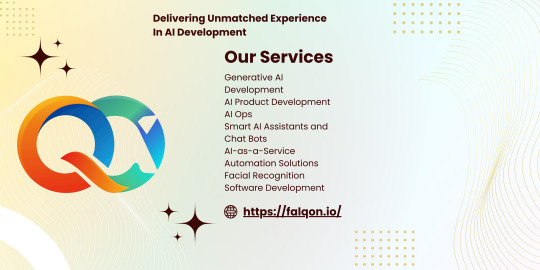
artificial intelligence| ai development companies| ai in business| ai for business automation| ai development| artificial intelligence ai| ai technology| ai companies| ai developers| ai intelligence| generative ai| ai software development| top ai companies| ai ops| ai software companies| companies that work on ai| artificial intelligence service providers in india| artificial intelligence companies| customer service ai| ai model| leading ai companies| ai in customer support| ai solutions for small business| ai for business book| basic knowledge for artificial intelligence| matching in artificial intelligence|
#artificial intelligence#ai development companies#ai in business#ai for business automation#ai development#artificial intelligence ai#ai technology#ai companies#ai developers#ai intelligence#generative ai#ai software development#top ai companies#ai ops#ai software companies#companies that work on ai#artificial intelligence service providers in india#artificial intelligence companies#customer service ai#ai model#leading ai companies#ai in customer support#ai solutions for small business#ai for business book#basic knowledge for artificial intelligence#matching in artificial intelligence
2 notes
·
View notes
Text
How Can Gen AI Revolutionize Your Accounts Receivable Process?
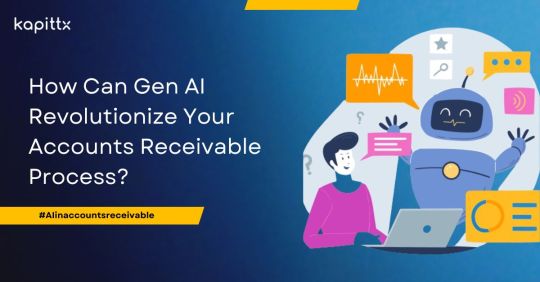
The advent of Generative AI (Gen AI) heralds a paradigm shift in the landscape of Finance and Accounting (F&A). Much like the introduction of spreadsheets as a product innovation decades ago, finance professionals were quick to embrace and derive immense benefits from the use of spreadsheets.
Gen AI in Finance and Accounting emerges as a potential game-changer, poised to revolutionize traditional practices within the realm of F&A and invoice payments. However, for this potential to be realized, CFOs must demonstrate openness to experimentation, allowing themselves to explore the tangible impact of Gen AI in Finance and Accounting functions.
Embarking on this journey necessitates a focused exploration of Gen AI’s applicability, particularly within accounts receivable management and invoice payments. By delving into this domain, CFOs can gain firsthand insight into the transformative power of Gen AI in Accounts Receivable. As with any strategic business investment, it is prudent to assess the anticipated returns and the timeframe within which these benefits can be realized.
In essence, embracing Gen AI in accounts receivable and invoice payments represents not only a technological advancement but also a strategic imperative for forward-thinking finance leaders. By embracing innovation and fostering a culture of experimentation, organizations can unlock unprecedented efficiency, agility, and competitive advantage in the ever-evolving landscape of finance and accounting.
How Can Gen AI Revolutionize Your Accounts Receivable Process?
Irrespective of the organization, to ensure optimal efficiency within the accounts receivable function and to explore the potential of integrating Gen AI powered Accounts receivable, it is essential to adopt a strategic approach centered around four key building blocks. These pillars serve as the foundation for effective management and innovation in accounts receivable:
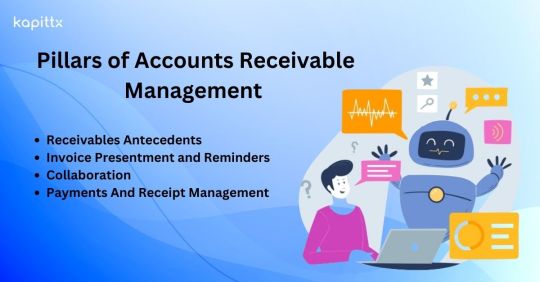
Receivable Antecedents :
This encompasses the meticulous orchestration of all preliminary tasks necessary to establish a receivable. From the initial engagement with clients to the negotiation of terms, to the careful documentation of agreements, each step in this process demands precision and foresight. Building strong receivables antecedents lays the foundation for smooth transactions, timely invoice payments and ensures a robust financial framework
They include:
Customer Onboarding: Accurate customer data collection, credit checks, and setting credit limits.
Sales Order Processing: Efficiently converting orders into invoices.
Contractual Agreements: Clear terms and conditions regarding payment terms, discounts, and penalties.
Order Fulfillment: Ensuring timely delivery of goods or services.
Timely Invoicing: Generate invoices promptly after goods/services are delivered.
Clear and Accurate Invoices: Ensure clarity, itemization, and correct pricing.
Invoice Presentment and Reminders:
In the dynamic landscape of revenue management, the presentation of invoices holds paramount importance. It transcends beyond mere documentation; it embodies the essence of your transactions, encapsulating the value exchanged with your clients. Your approach to invoice presentment and invoice payments is characterized by clarity, accuracy, and timeliness. Moreover, one need to recognize the strategic significance of reminders in facilitating prompt invoice payments. Through proactive communication and gentle nudges, you endeavor to uphold transparency, nurture client relationships, and optimize cash flow dynamics.
This step involves creating and delivering invoices to customers:
Multiple Channels: Offer electronic and paper-based invoice delivery to facilitate invoice payments.
Standard Payment Reminder Schedule:
o Set a consistent schedule for sending payment reminders. This helps maintain clarity and predictability for both you and your clients. o Send reminders before the due date to gently prompt clients to pay on time. o Issue reminders close to the actual due date to emphasize the urgency.
• Personalized Reminders:
o Customize your reminders to suit each client. Address them by name and include relevant details. o Personalization shows that you value the relationship and encourages prompt payment.
• Politeness and Professionalism:
o Maintain a polite and professional tone in your reminders. o Avoid threatening language or negativity that could harm the client relationship. o Clearly state the purpose of the reminder and the essential details, such as the invoice number, amount due, and due date.
Collaboration :
Collaboration lies at the heart of your approach, both externally with your valued customers and internally among your team members and departments. Externally, effective collaboration involves understanding your clients’ needs, communicating transparently, and working together to resolve any issues or discrepancies promptly. Internally, collaboration ensures alignment across functions, streamlines processes, and maximizes efficiency, ultimately leading to superior customer service and satisfaction.
Effective communication is crucial:
Customer Communication: Regular follow-ups, addressing queries, and resolving disputes.
Internal Coordination: Collaboration between sales, finance, and customer service teams.
Dispute Resolution: Swiftly address any discrepancies.
Payments and receipt management :
Efficient management of invoice payments and receipts is essential for maintaining cash flow and optimizing financial performance. This includes implementing secure and convenient payment channels, diligently tracking incoming payments, and promptly reconciling accounts. By prioritizing invoice payments and receipt management, you can minimize delays, mitigate risks, and ensure the stability and resilience of our financial ecosystem.
Efficient handling of incoming invoice payments:
Payment Channels: Accept various methods (credit cards, bank transfers, etc.).
Reconciliation: Match payments with outstanding invoices.
Cash Application: Apply payments accurately to the correct accounts.
What are the building blocks of Gen AI in Accounts Receivable?
Overall, Gen AI in accounts receivable encompasses a wide range of capabilities making it a versatile tool for various applications across different domains. A few of the core building blocks are –
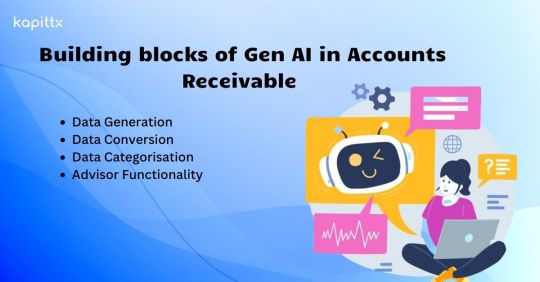
Data Generation: Gen AI In accounts receivable, can generate synthetic data to augment existing datasets used for training predictive models. For example, it can create simulated customer invoice payments histories, including variations in payment amounts, frequencies, and timing. This synthetic data allows organizations to train their models more comprehensively, improving the accuracy of predictions regarding future payment behavior.
Data Conversion: Gen AI in accounts receivable can facilitate the conversion of data between different formats in the accounts receivable process. For instance, it can automatically convert paper-based invoices into digital formats by extracting relevant information such as invoice numbers, amounts, and due dates using optical character recognition (OCR) technology. This conversion streamlines the invoicing process, reducing manual effort and minimizing errors.
Data Categorization: Gen AI in accounts receivable, can categorize transactions based on various criteria such as invoice payment methods, customer segments, or invoice statuses. For example, it can automatically classify incoming invoice payments as cash, checks, or electronic transfers, allowing finance teams to track payment trends and reconcile accounts more efficiently. By categorizing transactions accurately, Gen AI powered accounts receivable enhances data organization and facilitates deeper insights into receivables management.
Advisor Functionality: Gen AI in accounts receivable serves as an intelligent advisor by providing actionable insights and recommendations based on analyzed data. For example, it can identify patterns of late invoice payments or discrepancies in invoicing that may indicate potential issues with specific customers or billing processes. By alerting finance teams to these anomalies, Gen AI powered accounts receivable enables proactive intervention to mitigate risks and optimize cash flow management.
Overall, Generative AI enhances the efficiency and effectiveness of accounts receivable operations by generating data, facilitating data conversion, categorizing transactions, and providing intelligent advisory support. By leveraging Gen AI capabilities, organizations can streamline receivables management processes, improve decision-making, and ultimately enhance financial performance.
#ar automation solution#AI in Accounts Receivable#ar collection#Payment Reminder#cashflow management#AI In Finance & Accounting
2 notes
·
View notes
Text
85% of Australian e-commerce content found to be plagiarised

Optidan Published a Report Recently
OptiDan, an Australia-based specialist in AI-driven SEO strategies & Solutions, has recently published a report offering fresh insights into the Australian e-commerce sector. It reveals a striking statistic about content across more than 780 online retailers: 85% of it is plagiarised. This raises severe questions about authenticity and quality in the e-commerce world, with possibly grave implications for both consumers and retailers.
Coming from the founders of OptiDan, this report illuminates an issue that has largely fallen under the radar: content duplication. The report indicates that suppliers often supply identical product descriptions to several retailers, resulting in a sea of online stores harbouring the same content. This lack of uniqueness unfortunately leads to many sites being pushed down in search engine rankings, due to algorithms detecting the duplication. This results in retailers having to spend more on visibility through paid advertising to compensate.
Key Findings in Analysis
Key findings from OptiDan's research include a worrying lack of originality, with 86% of product pages not even meeting basic word count standards. Moreover, even among those that do feature sufficient word counts, Plagiarism is distressingly widespread. Notably, OptiDan's study presented clear evidence of the detrimental impacts of poor product content on consumer trust and return rates.
Founder and former retailer JP Tucker notes, "Online retailers anticipate high product ranking by Google and expect sales without investing in necessary, quality content — an essential for both criteria." Research from 2016 by Shotfarm corroborates these findings, suggesting that 40% of customers return online purchases due to poor product content.
Tucker's industry report reveals that Google usually accepts up to 10% of plagiarism to allow for the use of common terms. Nonetheless, OptiDan's study discovered that over 85% of audited product pages were above this limit. Further, over half of the product pages evidenced plagiarism levels of over 75%.
"Whilst I knew the problem was there, the high levels produced in the Industry report surprised me," said Tucker, expressing the depth of the issue. He's also noted the manufactured absence of the product title in the product description, a crucial aspect of SEO, in 85% of their audited pages. "Just because it reads well, doesn't mean it indexes well."
OptiDan has committed itself to transforming content performance for the online retail sector, aiming to make each brand's content work for them, instead of against them. Tucker guarantees the effectiveness of OptiDan's revolutionary approach: "We specialise in transforming E-commerce SEO content within the first month, paving the way for ongoing optimisation and reindexing performance."
OptiDan has even put a money-back guarantee on its Full Content Optimisation Service for Shopify & Shopify Plus partners. This offer is expected to extend to non-Shopify customers soon. For now, all retailers can utilise a free website audit of their content through OptiDan.
Optidan – Top AI SEO Agency
Optidan is a Trusted AI SEO services Provider Company from Sydney, Australia. Our Services like - Bulk Content Creation SEO, Plagiarism Detection SEO, AI-based SEO, Machine Learning AI, Robotic SEO Automation, and Semantic SEO
We’re not just a service provider; we’re a partner, a collaborator, and a fellow traveller on this exciting digital journey. Together, let’s explore the limitless possibilities and redefine digital success.
Intrigued to learn more? Let’s connect! Schedule a demo call with us and discover how OptiDan can transform your digital performance.
Reference link – Here Click
#Shopify SEO consultant#E-commerce SEO solutions#Shopify integration services#AI technology for efficient SEO#SEO content creation services#High-volume content writing#Plagiarism removal services#AI-driven SEO strategies#Rapid SEO results services#Automated SEO solutions#Best Shopify SEO strategies for retailers
3 notes
·
View notes
Text
Supercharge Your Business with Microsoft Dynamics: Our Services Tailored for You! Harness the power of Microsoft Dynamics to streamline your operations and drive growth. Our expert consultants deliver comprehensive solutions, customization, and support. Get the full potential of this powerful platform and gain a competitive advantage in your industry.
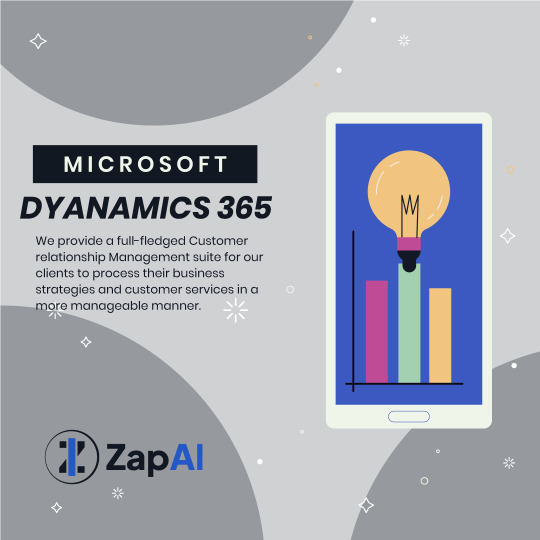
2 notes
·
View notes
Text
Unlocking Business Efficiency with Custom AI Automation Services
Discover how custom AI agents are revolutionizing business automation in 2025. This in-depth blog explains why generic AI tools no longer meet the demands of growing companies—and how custom-built agents can automate tasks, boost team productivity, and cut operational costs. Learn what separates great AI development firms from the rest, the key traits to look for, and why service providers like Agent Architects are leading the way with end-to-end automation solutions. If you're exploring how to scale smarter with AI-powered workflows, this article offers valuable insights to guide your decision and accelerate your transformation.
#how to choose the right AI automation company#benefits of custom AI agent development#best AI automation services#AI automation#Custom AI agents#AI agent development company#AI automation services#AI agent development#Custom AI solutions
1 note
·
View note
Text
How Can Generative AI Help in Building Cost Reduction Strategies

Generative AI is a new age for James Bond, who has been doing unimaginative things that even the scriptwriters of James Bond movies would have never imagined. Ever since artificial intelligence took the world by storm, it’s been a trend to mention Gen AI and revolutionize in one line.
Generative AI, which is fundamentally a branch of artificial intelligence, has gone ahead of it. While AI is busy transforming business environments, generative AI solutions are altering humans’ thinking patterns. It has proven to be the finest efficiency enhancer.
It automates iterative tasks, collects, segments, and analyzes big data, and prepares reports and insights. From streamlining operations to turning a business into a cost-effective and competitive one, generative AI is leading businesses toward innovation and a better tomorrow.
Understanding Generative AI:
Understanding the capabilities of generative AI isn’t difficult if you know the fundamental difference between creative ideas and preconceived ideas. While traditional AI offers programmed answers, generative AI brings us original and unique concepts created using neural networks and deep learning algorithms.
When it comes to problem-solving, traditional AI has limited understanding and timid solutions, while generative AI excels in creativity and offers out-of-the-box solutions. For example, archaic AI was not able to understand the queries posed by customers, but chatbots powered by generative AI comprehend questions efficiently and answer them to improve customer satisfaction.
Gen AI-driven Cost Reduction Strategies:
The undisputed fact is that generative AI solutions are bringing unmatched transformation in the operations efficiency of businesses. However, the biggest benefit for businesses is cost reduction. From operations to overhead and logistics, generative AI (GAI) has been changing the way businesses conduct their daily operations.
From analyzing huge datasets to producing creative solutions, Generative AI development is helping businesses enhance resource management and streamline workflows to save big money. Let’s look at how generative AI is helping businesses define their cost-cutting strategies across sectors.
Manufacturing: From Prototype to Production with Generative Efficiency
Waste Control: Generative AI analyzes production constraints and design anomalies to develop a design that uses optimal material. Thus, Gen AI reduces material waste and, thereby, manufacturing costs.
Automated Quality Control: Generative AI can be deployed to regularly investigate the systems quickly and accurately to reduce human mistakes and correlative costs.
Predictive Maintenance: GAI continuously analyzes machine data to forecast system failures and alerts technicians to precautionary maintenance to avoid downtime and associated costs.
Supply Chain Management: Intelligent Inventory and Logistics
Dynamic Pricing: Gen AI Solutions analyzes product demand, customer behavior, and market dynamics in real time to propose dynamic pricing that optimizes profitability and competitiveness.
Demand Forecasting: Generative AI evaluate historical data, analyze market trends, and monitor public sentiments through social media to predict demands that optimize inventory management and reduce storage costs.
Route Optimization: Gen AI development equips businesses to analyze weather conditions, traffic patterns, and fuel consumption to optimize delivery routes and reduce transportation costs.
Finance and Insurance: Streamlined Processes and Fraud Detection
Automated Data Entry: The finance sector produces unprecedented amounts of data that require proper entry to generate analytics. Gen AI automates these repetitive data entry tasks to optimize resources and reduce labor costs.
Fraud Detection: Finance and fraud are two sides of the same coin. Gen AI tracks transaction patterns to detect anomalies, prevent fraud, prevent financial losses, and protect data privacy.
Risk Analysis: GAI analyzes individuals’ investment patterns and assesses their risk appetite to suggest better investment options and secure them through competitive insurance, preventing money waste.
Marketing and Sales: Tailored Content and Targeted Campaigns
Content Generation: Creativity has been the forte of generative AI solutions. Businesses can create marketing materials, target-specific social media posts, and run personalized email campaigns leveraging GAI.
Targeted Advertising: Generative AI evaluates KPIs and many other metrics to define the target audience and relevant demography to run campaigns that reduce spending on unnecessary advertising.
Virtual Assistants: GAI is taking over customer support through virtual assistants. AI-powered chatbots respond instantly to customer queries and provide 24/7 support to enhance customer satisfaction.
Healthcare: Personalized Medicine and Drug Discovery
Medical Imaging Analysis: Generative AI development involves scanning medical images to perfection to help doctors diagnose diseases and reduce the cost of repetitive image scans.
Drug Discovery: A generative AI solution architect processes molecule datasets and disease mutations to discover drugs. The architect uses Gnome and DNA analysis to identify people and evaluate the drug’s potency.
Personalized Treatment: Gen AI is capable of evaluating patients’ health data, medication, and responses to allow doctors to determine the most accurate treatment for patients, leading to reduced medication costs.
Customer Service: Resolution through Virtual Assistants
Sentiment Analysis and Resolution: Gen AI scans social media to understand market sentiments, address them promptly, and reduce the need to hire expensive customer service executives.
Virtual Assistants: When chatbots can answer all customer queries satisfactorily and add value to customers’ purchases, why would businesses spend money on human resources at high prices?
Cybersecurity: Exposure Analysis and Prevention
Threat Detection and Prevention: Generative AI services providers are focused on cybersecurity concerns and building Gen AI solutions that identify and prevent cyberattacks in real-time, reducing disaster costs.
Vulnerability Analysis: Generative AI regularly inspects software code and other technical glitches to reduce the cost of security breaches by taking pre-empt measures.
Software Development: Automation, Testing and Prototyping
Software development: Software development is costly, but AI can significantly reduce development costs by automating code generation. AI and automation solutions can also evaluate the framework, libraries, and project requirements accurately for resource optimization.
Intelligent Testing: With AI’s deep penetration in software development, costly manual testing is being replaced by automated testing. AI creates efficient and targeted test cases to save valuable development hours.
Key Benefits of Generative AI for Cost Reduction:
Think of software, although the development is costly, which can help you with cost cutting. Generative AI is a computer program that helps businesses save money and time, bringing efficiency.
Businesses are already plucking the low-hanging fruits of using generative AI even though they have yet to explore the field thoroughly. Generative AI solutions eliminate errors, automate tasks, stimulate creativity, and reduce waste – all to ensure businesses become cost-effective.
Automating Complex Tasks:
Generative AI goes beyond standard automation as it takes on complex, repetitive tasks. A survey suggests code automation saves 20 to 30% of the time. GAI not only saves time but also reduces labor costs.
Enhanced Decision-Making:
Generative AI solutions improve the accuracy and quality of business decisions by involving big data analytics and generating insights. From resource allocation to waste reduction, Gen AI ensures businesses become competitive.
Predictive Capabilities:
Generative AI solutions play a vital role in protecting businesses from incurring massive financial losses due to bad decisions. The predictive analysis gives a rooted idea about the market, customers, and risks, allowing timely measures.
Personalization:
One of the best uses of Gen AI is personalization, which not only saves money but also enhances customer satisfaction. Tailored conversation between the brand and consumers improves brand trust and customer loyalty at the same time.
Rapid Prototyping and Innovation:
Product design and development were forever changed after AI started producing design mockups and virtual prototypes. Generative AI quickly refines ideas and turns them into virtual products without real-world costs.
Uncovers Hidden Savings:
Generative AI is excellent at identifying unnecessary spending. They tell how expenses can be avoided or optimized. They identify loopholes in the system to improve resource allocation, thereby curbing unnecessary spending.
Fraud Detection:
Generative AI gets proactive when it is required to protect systems from cyberattacks. Gen AI constantly tracks every transaction for inconsistent or suspicious transactions to notify the cybersecurity team so that businesses can protect their hard-earned money.
Best Practices for Optimizing Generative AI Costs:
Like every good ship needs an able hand to navigate the challenges at high sea, implementation of generative AI solutions needs human oversight and timely interventions to get the maximum out of it. Smart management of generative AI solutions in businesses bears sweet fruits. Let’s check what best practices businesses can follow to optimize generative AI for cost-cutting.
Clear Objectives:
Evaluate the costs and determine the objectives of implementing Gen AI solutions.
Right Use Cases:
Selecting the proper use cases becomes vital when GAI is implemented in critical areas.
Data Quality:
No compromise in data quality. Training AI models need unbiased and diverse datasets for accuracy.
Scalable Infrastructure:
Instead of physical IT infrastructure, we prefer cloud-based to manage the increasing load without breaking the bank.
Consistent Monitoring:
Evaluating the performance of the gen AI model helps improve performance and reduce update costs.
Human-AI Collaboration:
Keep gen AI solutions to perform the tasks and human resources to look over AI performance for optimal use and cost-effectiveness.
Ethical AI Use:
Ethical considerations are vital for the success of gen AI solutions and their ability to cut operational costs for businesses.
Invest in AI Education:
Since AI is relatively new and users are unskilled, businesses must invest in educating their employees for better returns.
Iterative Implementation:
Start with a pilot project, check performance, learn, adapt, and improve before scaling the solution.
Vendor Management:
Choosing the right generative AI services provider and selecting flexible contracts is vital for controlling costs.
Original Source: https://useallday.com/how-can-generative-ai-help-in-building-cost-reduction-strategies
0 notes
Text
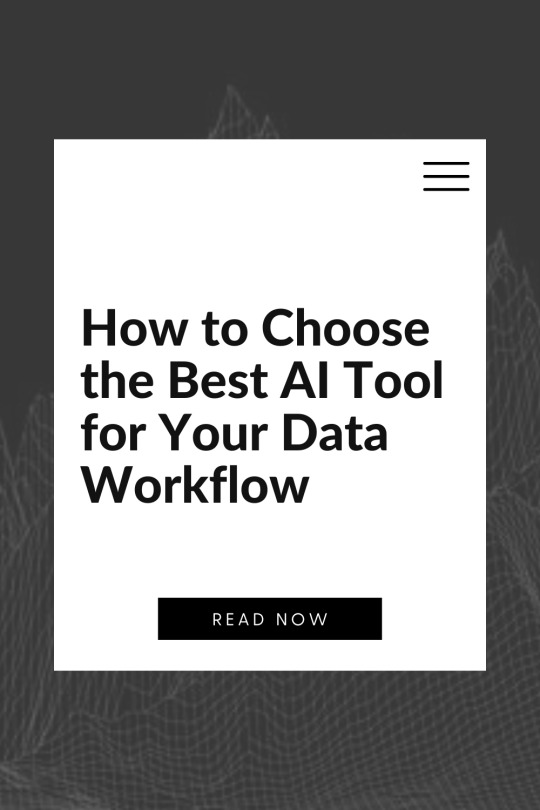
How to Choose the Best AI Tool for Your Data Workflow
AI isn’t just changing the way we work with data, it’s opening doors to entirely new possibilities. From streamlining everyday tasks to uncovering insights that were once out of reach, the right AI tools can make your data workflow smarter and more efficient. But with so many options out there, finding the one that fits can feel like searching for a needle in a haystack. That’s why taking the time to understand your needs and explore your options isn’t just smart, it’s essential.
In this guide, we’ll walk you through a proven, easy-to-remember decision-making framework: The D.A.T.A. Method: a 4-step process to help you confidently choose the AI tool that fits your workflow, team, and goals.

The D.A.T.A. Method: A Framework for Choosing AI Tools
The D.A.T.A. Method stands for:
Define your goals
Analyze your data needs
Test tools with real scenarios
Assess scalability and fit
Each step provides clarity and focus, helping you navigate a crowded market of AI platforms with confidence.
Step 1: Define Your Goals
Start by identifying the core problem you’re trying to solve. Without a clear purpose, it’s easy to be distracted by tools with impressive features but limited practical value for your needs.
Ask yourself:
What are you hoping to achieve with AI?
Are you focused on automating workflows, building predictive models, generating insights, or something else?
Who are the primary users: data scientists, analysts, or business stakeholders?
What decisions or processes will this tool support?
Having a well-defined objective will help narrow down your choices and align tool functionality with business impact.
Step 2: Analyze Your Data Needs
Different AI tools are designed for different types of data and use cases. Understanding the nature of your data is essential before selecting a platform.
Consider the following:
What types of data are you working with? (Structured, unstructured, text, image, time-series, etc.)
How is your data stored? (Cloud databases, spreadsheets, APIs, third-party platforms)
What is the size and volume of your data?
Do you need real-time processing capabilities, or is batch processing sufficient?
How clean or messy is your data?
For example, if you're analyzing large volumes of unstructured text data, an NLP-focused platform like MonkeyLearn or Hugging Face may be more appropriate than a traditional BI tool.
Step 3: Test Tools with Real Scenarios
Don’t rely solely on vendor claims or product demos. The best way to evaluate an AI tool is by putting it to work in your own environment.
Here’s how:
Use a free trial, sandbox environment, or open-source version of the tool.
Load a representative sample of your data.
Attempt a key task that reflects a typical use case in your workflow.
Assess the output, usability, and speed.
During testing, ask:
Is the setup process straightforward?
How intuitive is the user interface?
Can the tool deliver accurate, actionable results?
How easy is it to collaborate and share results?
This step ensures you're not just selecting a powerful tool, but one that your team can adopt and scale with minimal friction.
Step 4: Assess Scalability and Fit
Choosing a tool that meets your current needs is important, but so is planning for future growth. Consider how well a tool will scale with your team and data volume over time.
Evaluate:
Scalability: Can it handle larger datasets, more complex models, or multiple users?
Integration: Does it connect easily with your existing tech stack and data pipelines?
Collaboration: Can teams work together within the platform effectively?
Support: Is there a responsive support team, active user community, and comprehensive documentation?
Cost: Does the pricing model align with your budget and usage patterns?
A well-fitting AI tool should enhance (not hinder) your existing workflow and strategic roadmap.
“The best tools are the ones that solve real problems, not just the ones with the shiniest features.”
— Ben Lorica (Data scientist and AI conference organizer)
Categories of AI Tools to Explore
To help narrow your search, here’s an overview of AI tool categories commonly used in data workflows:
Data Preparation and Cleaning
Trifacta
Alteryx
DataRobot
Machine Learning Platforms
Google Cloud AI Platform
Azure ML Studio
H2O.ai
Business Intelligence and Visualization
Tableau – Enterprise-grade dashboards and visual analytics.
Power BI – Microsoft’s comprehensive business analytics suite.
ThoughtSpot – Search-driven analytics and natural language querying.
DataPeak by Factr – A next-generation AI assistant that’s ideal for teams looking to enhance decision-making with minimal manual querying.
AI Automation and Workflow Tools
UiPath
Automation Anywhere
Zapier (AI integrations)
Data Integration and ETL
Talend
Fivetran
Apache NiFi
Use the D.A.T.A. Method to determine which combination of these tools best supports your goals, data structure, and team workflows.
AI Tool Selection Checklist
Here’s a practical checklist to guide your evaluation process:
Have you clearly defined your use case and goals?
Do you understand your data’s structure, source, and quality?
Have you tested the tool with a real-world task?
Can the tool scale with your team and data needs?
Is the pricing model sustainable and aligned with your usage?
Does it integrate smoothly into your existing workflow?
Is support readily available?
Selecting the right AI tool is not about chasing the newest technology, it’s about aligning the tool with your specific needs, goals, and data ecosystem. The D.A.T.A. Method offers a simple, repeatable way to bring structure and strategy to your decision-making process.
With a thoughtful approach, you can cut through the noise, avoid common pitfalls, and choose a solution that genuinely enhances your workflow. The perfect AI tool isn’t the one with the most features, it’s the one that fits your needs today and grows with you tomorrow.
Learn more about DataPeak:
#datapeak#factr#saas#technology#agentic ai#artificial intelligence#machine learning#ai#ai-driven business solutions#machine learning for workflow#digitaltools#digital technology#digital trends#datadrivendecisions#dataanalytics#data driven decision making#agentic#ai solutions for data driven decision making#ai business tools#aiinnovation#ai platform for business process automation#ai business solutions
0 notes
Text
In today’s hyper-competitive B2B landscape, traditional outbound calling isn’t cutting it anymore. SDRs spend countless hours dialing leads manually, logging notes, and chasing follow-ups, often leading to burnout, human error, and inconsistent messaging. Enter the automated outbound calling solution, an AI-powered way to supercharge your team’s outreach, optimize workflows, and increase conversions without adding stress. Check out this blog to learn about automated outbound calling solutions: What it is and why your sales team needs one.
#AI Call Bot Agent#Automated outbound calling solution#AI Call Agent Software#AI Outbound Sales Agent
0 notes
Text
Ultimate Guide to DeepSeek AI for Business Growth
Table of Contents of DeepSeek AI for Business Growth1. Introduction: Why AI is Essential for Modern Business Growth2. What Is DeepSeek AI?3. Top 5 DeepSeek AI Tools for Scaling Businesses3.1 Demand Forecasting Engine3.2 Customer Lifetime Value (CLV) Predictor3.3 Automated Supply Chain Optimizer3.4 Dynamic Pricing Module3.5 Sentiment Analysis Hub4. How DeepSeek AI Reduces Costs and Boosts…
#AI automation 2024#AI budgeting#AI business growth#AI for non-tech teams#AI for startups#AI implementation guide#AI in retail#AI supply chain#Business Intelligence#cost reduction strategies#data-driven decisions#DeepSeek AI#enterprise AI adoption#fintech AI solutions#generative AI for business#Predictive Analytics#ROI optimization#scaling with AI#SME AI tools#startup scaling
2 notes
·
View notes
Text
Gen AI and Automation: 7 Processes to Automate Before Gen AI Comes In
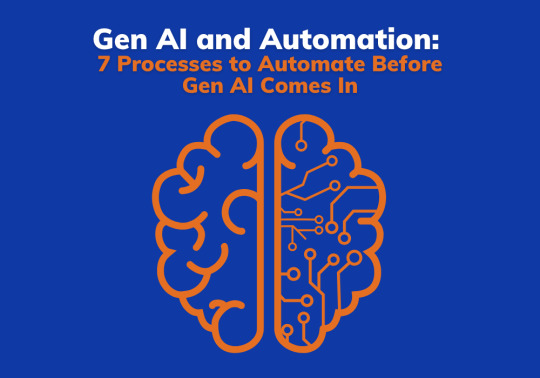
Gen AI and automation are top priorities for every business leader today. They’re under constant pressure to keep up with the latest technological trends!
There is no doubt generative AI or Gen AI is transforming enterprise workflows. But the transition and adoption are not devoid of challenges! So, before bringing in tools like ChatGPT, Gemini, or Copilot, it’s wiser to automate first.
It’s not a question of AI vs Automation — it’s about choosing a more pragmatic pathway to AI success.
In this blog, we’ll tell you:
Why automation is the bedrock you need to layer Gen AI on for greater benefits and value.
Some key high-impact pre-AI automations you can launch to set the stage.
How this approach saves you from sub-par outcomes and despair, especially if you’re an organization with little or no AI experience.
Gen AI and Automation: Different Yet Complementary
Traditional automation and generative AI are distinct concepts, not competing against each other. In fact, they’re synergistic. But before going ahead, let’s brush up on the concepts:
Generative AI unlocks new possibilities for creativity, innovation, and hyper-personalization. Business applications include content creation, design, audio & video generation, and coding/development. It’s characterized by its ability to think, self-learn, and adapt.
Automation excels at optimizing repetitive, mundane tasks. A pre-defined set of rules ensures better control over the process. It frees teams from routine manual work to take up high-value activities.
Both technologies help you drive better efficiency and resource optimization. Human judgment and supervision add more reliability, nonetheless.
Well, Gen AI maturity, performance, and reliability are still a work in progress. But as said earlier, businesses can’t afford to miss riding the wave either.
Hence, it makes even more sense to start by automating tasks you want Gen AI-enabled.
Layer Up to Maximize Value: Automate First, AI Next
Let’s understand how automation clears the decks, ensures best practices, and creates a solid AI foundation:
Data hygiene for Gen AI models: Automation ensures clean, consistent, and structured data. It provides Gen AI with accurate, reliable inputs to work with.
Workflow standardization: Automated, rule-based processes create predictable workflows. This makes it easier to integrate Gen AI without chaos.
Customize AI as per brand needs: Automation lays down clear process frameworks, which allows customizing Gen AI to fit brand voice, tone, and operational rules.
Responsible AI/Gen AI: Automation ensures compliance checks and data governance, allowing safe scaling of Gen AI within ethical and regulatory boundaries.
7 Processes to Automate Before You Bring ChatGPT or Gemini
So, you see it’s a win-win: automate simple stuff first and scale up to AI/Gen AI when you’re ready. Here’re the top workflows you should consider automating for Generative AI to truly shine.
Customer Service & Support
Data Analysis & Reporting
Finance & Accounting
Human Resource Management
Legal, Compliance, Contract Documentation
Marketing, Sales, and CRM
Supply Chain & Logistics
Don’t Fall for Gen AI vs Automation; Leverage the Power Duo
Automating repetitive, high-volume, rule-based processes helps businesses eliminate inefficiencies, overcome compliance hurdles, and create a reliable launchpad for Gen AI success. This approach also reduces the time to implement more complex intelligent automations in the future.
And do not forget the cost factor. Freemiums might suffice for individuals and small firms, but enterprise-grade paid generative AI tools are the way to go if you’re a medium or large-sized company.
Layering AI on automation ensures the AI model can be trained as per your exact operational needs. Importantly, it serves as your AI investment safety net, streamlining costs overall.
READ MORE
#Generative AI and Automation#Automation Solutions#Intelligent Automation#artificial intelligence#AI Solutions#Centelli#Dubai
0 notes
Text

https://www.istudiotech.in/artificial-intelligence-development-company-in-chennai-india/
iStudio Technologies is a leading Artificial Intelligence (AI) Development Company in Chennai, offering cutting-edge solutions that empower industries like education, finance, and mobile apps. Their services include AI chatbots, voice assistants, automated grading, secure online assessments, and hyper-personalized learning systems to enhance productivity, decision-making, and user experience.
#AI Development#Artificial Intelligence Chennai#Machine Learning Solutions#AI Chatbot#EdTech AI#AI in Education#AI Software Company#Smart Learning Tools#Automation in Education#AI Developers Chennai#web designing company in chennai
0 notes